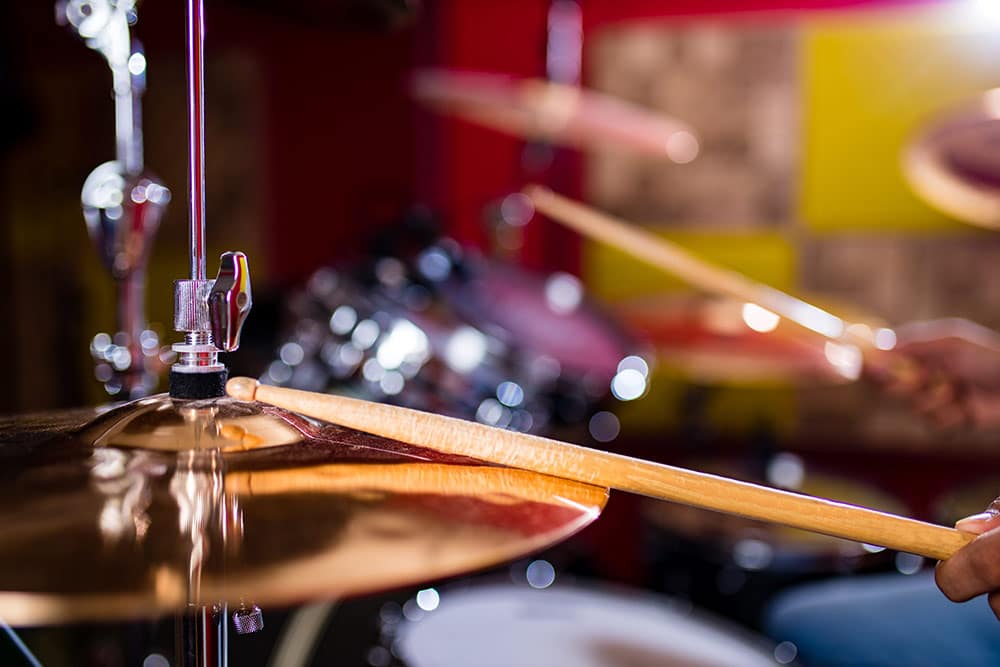6 Tips to Reap All The Benefits of Your Drum Lessons

Watching YouTube drum videos 20 hours a day is never a good practice for you to reap all the benefits of your drum lessons. There are various principles that you have to stick to to be able to see that improvement every single day. Don’t worry too much if you don’t know where to start. Listed below are a few things that can help you jump start this journey.
1. Master the Fundamentals
You might be too overwhelmed when you’re sitting in front of the drum set to the point that you want to face challenging music right away. However, this will only lead to an unfocused type of learning.
The best route to take is to master the fundamentals first. Practice the basic rhythms and beats that you learn from your drum lessons every day and memorize every beat with your heart and mind. This will be your guiding principle when coming up with your original beats or even synching yourself with songs.
You might ask, what are the best ways for you to focus on fundamentals? Here are some tips from professional drummers:
- Adpt yourself with the drum sheet music. Learn to read them as if you’re just pronouncing your ABCs.
- Keep your limbs in sync and develop muscle memory by practicing with a metronome.
- Master the 40 essential rudiments that will serve as your force when playing.
2. Start Your Practice Sessions with a Plan
Every time you sit in front of your drums, ensure that you already have a practice plan in mind. For example, are you just going to continuously repeat five beats from your drum sheet music for the next hour, or are you planning to play around and be spontaneous so you can get used to your new drum set?
Remember that drumming practice does not solely rely on how many days and hours you put in it. It will primarily depend on the quality of your session. If you are making a lot of mistakes synchronizing the beats or executing proper techniques, you won’t be at your best. This is where your plan will come in. If you feel that you’re still lacking in a particular area, that’s where you will focus in the coming days. Plan properly and make every session as efficient as possible.
In fact, some experts even recommend that you draft your practice plan at the start of the week so that your mindset is already prepared throughout.
3. Get Lessons From a Professional Music Teacher
Don’t be too confident that you can learn everything with drum apps and Youtube lessons. Although online content is useful in improving your drum skills, nothing is better than asking for help from a professional music teacher.
Remember that it’s not only kids that can proceed with this route. There are also drum classes for adults that professionals offer.

4. Exercise Rebounds at Both High and Low Speeds
You will notice that your stick naturally bounces off your drum’s surface upon striking it. However, keep in mind that these rebounds rely not only on your force but also on your drumming speed. Therefore, in the long run, one technique that will help you is exercising your rebounds for both high and low speeds.
Aside from basing your playing on the speeds, it will also help if you note how you hold your stick. For instance, your rebound will change if you are holding it too tightly or if your form is not at its most efficient position.
Professionals also recommend playing on pillows if you’re just beginning your drum journey. This is an effective technique that is used to develop your muscles both in the arms and hands. The concept behind this is that cushioned surfaces do not result in any rebound. This pushes you to work harder to be able to fulfill each drum stroke. However, don’t spend too much of your time on this exercise though. Have enough recovery time for your muscles and joints to avoid any wrist problems in the future.
Mastering this skill will definitely save your energy per drum stroke. In addition, this will eventually lead to higher endurance when playing and increase your speed much more.
5. Balance Your Technique With Musicality
Once you’ve covered your fundamentals, the next phase is to apply this side-by-side with musicality. Don’t just stick to your finger techniques and beat practice if you feel that you’ve mastered them already. There is room for growth through the musicality phase. After all, what’s the point of covering these technical things if you don’t apply them in music? To be a better musician, it’s always a balance between musicality and technique.
6. Take The Leap
Don’t be too consumed with the feat of expanding your horizon. Practicing at home and engaging with your professional teacher may be a good start. However, this is only the start of your drumming journey. Once you feel that your technique and musicality are at their peak already, the next stage is to add experience to this.
Having experience in performing in front of a crowd will not only boost your confidence but is also a perfect way to practice your skills. Admit it or not, the way someone plays gets affected by adrenaline and pressure. Fear will stick if you don’t get used to these emotions, and you won’t grow as a musician.
Take risks, expose yourself, participate in gigs, and play your heart out. This is a great culmination of your drum lessons.
Follow Through With Your Drum Lessons
Whether you’re taking drum lessons for adults or you’re a kid at your beginner phase, make sure to follow through with your drum lessons. Although many great drummers have already stamped their names in the industry, you too will always have a spot in this elite group. Just make sure to apply the tips above in your musical journey, and you’ll eventually take over the stage soon!

